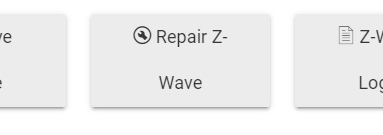I have a mostly central location for my C7 and all devices paired without issue from their final location. Over time, some of the further contact sensors would miss events. Besides the C7 I have one other mains-powered device that's off to one side of the home. FWIW the sensors that went flaky were at the opposite end of the home from the mains-powered unit, making the C7 actually closest. So to repeat signals, so I purchased an Aeotec Range Extender 7 and installed it near the flaky units - paired right up.
So am I supposed to just trust the unit is repeating signals? I swear at one point on the ZWave page where it lists all of the Zdevices, one showed 01->0A->13, which I suppose means repeating occurred, but that's never shown again since. The topology map shows what might mean neighboring, I guess, but how would I know?
Then the ZWave logs. How to decipher these?
Garage Window (Rear)2022-09-28 12:18:15.773 seqNo: 233, routeChanged: false, transmissionTime: 1ms, repeaters: None, speed: 100 kbs, rssi: [-90 dBm, N/A, N/A, N/A, N/A], Ack channel: 0, Transmit channel: 0
Garage Window (Front)2022-09-28 12:11:17.336 seqNo: 232, routeChanged: false, transmissionTime: 1ms, repeaters: None, speed: 100 kbs, rssi: [-89 dBm, N/A, N/A, N/A, N/A], Ack channel: 0, Transmit channel: 0
Zoe's Bedroom Window2022-09-28 12:01:28.684 seqNo: 231, routeChanged: false, transmissionTime: 1ms, repeaters: None, speed: 40 kbs, rssi: [-91 dBm, N/A, N/A, N/A, N/A], Ack channel: 1, Transmit channel: 1
Guest Bedroom Window2022-09-28 12:00:54.927 seqNo: 230, routeChanged: false, transmissionTime: 1ms, repeaters: None, speed: 100 kbs, rssi: [-83 dBm, N/A, N/A, N/A, N/A], Ack channel: 0, Transmit channel: 0
Sliding Door (Left)2022-09-28 11:55:48.169 seqNo: 229, routeChanged: false, transmissionTime: 1ms, repeaters: None, speed: 40 kbs, rssi: [-87 dBm, N/A, N/A, N/A, N/A], Ack channel: 1, Transmit channel: 1
Repeaters: None means what? It's communicating directly with the C7?
I'd sure appreciate some decoding to help me on my way. Thanks!








